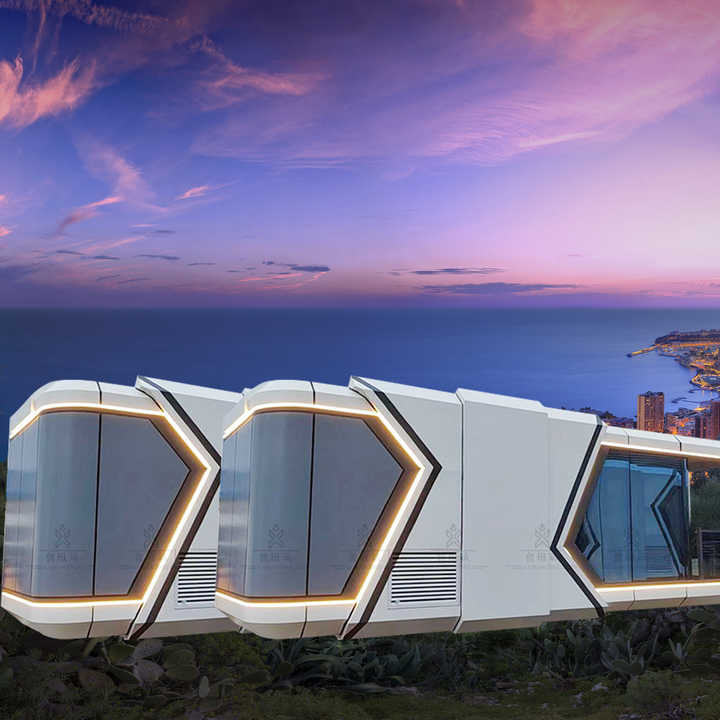How Pod Homes Are Revolutionizing Affordable Housing in Urban Areas
How Pod Homes Are Revolutionizing Affordable Housing in Urban Areas
Blog Article
Effortless Homebuilding With Modern Modular Home Layouts

Benefits of Modular Home Styles
Modular home designs use many advantages that make them an attractive selection for several homeowners. Among the main advantages is cost-effectiveness. Due to the fact that modular homes are constructed in a manufacturing facility setup, builders can streamline the process, minimizing labor and product expenses, which usually translates to lower rates for purchasers.
Furthermore, modular homes are known for their rate of building. pod homes. The regulated environment of a factory enables reliable setting up, making it possible for house owners to relocate right into their brand-new home much faster than traditional building methods would permit
Power efficiency is one more significant benefit. Lots of modular homes are developed with energy-efficient systems and sustainable products, leading to lower energy expenses and a decreased ecological footprint.
Additionally, modular layouts use a high degree of customization. Homeowners can typically pick from various layouts, materials, and finishes, ensuring that their home meets personal preferences and way of life needs.
Last but not least, modular homes are built to meet strenuous structure codes and requirements, guaranteeing sturdiness and security. In general, the mix of cost, speed, top quality, performance, and personalization makes modular home layouts an attractive alternative for a variety of buyers.
The Modular Building Process
The modular construction procedure includes an organized technique that considerably varies from typical building methods. Each component is developed with the exact same products and criteria as a site-built home, consisting of insulation, electrical wiring, and pipes systems.
As the components are built, the website prep work can occur all at once, including structure job and energy installments. This parallel process greatly decreases the overall timeline for completion. When the components are all set, they are moved to the building site, where they are craned into position and firmly signed up with together.
The lasts involve ending up touches, such as exterior house siding, roof covering, and indoor detailing. This structured strategy not just reduces construction waste but also boosts power efficiency via well-coordinated building practices. Generally, the modular construction process provides a much faster, cost-effective, and environmentally friendlier alternative to traditional home building.
Modification Options Available
Checking out personalization choices in modular home styles permits house owners to tailor their living areas to their one-of-a-kind preferences and lifestyles. Among the most attractive facets of modular homes is the adaptability they offer in style and design. Home owners can select from a selection of layout, varying from open-concept areas to a lot more conventional formats, ensuring that the home fits their details requirements.
Along with architectural modifications, customization extends to visual elements. Property owners can choose from a considerable palette of surfaces, products, and shades, including kitchen cabinetry, counter tops, flooring, and siding. This level of personalization allows homeowners to produce a natural layout that reflects their individual design.
Additionally, modular homes can incorporate energy-efficient attributes and smart innovation options. Home owners can go with photovoltaic panels, energy-efficient windows, and advanced heating and cooling down systems, adding to both convenience and utility cost savings.
Finally, many makers use the opportunity to include special components, such as built-in shelving, custom storage rooms, or outdoor space. This extensive series of modification options makes certain that modular home layouts can be as distinct and functional as the family members who inhabit them.
Sustainability in Modular Houses
Sustainability is a crucial consideration in contemporary home structure, and modular homes are significantly developed with green practices in mind. These frameworks decrease waste through reliable manufacturing procedures, as parts are produced in a controlled environment (pod homes). This not only minimizes the amount of material discarded throughout building and construction yet additionally decreases the carbon impact associated with typical structure methods
Modular homes frequently incorporate sustainable materials, such as reclaimed wood, recycled metal, and low-VOC paints, which add to healthier interior air quality. In addition, lots of styles integrate energy-efficient systems, consisting of solar panels, progressed insulation, and high-performance home windows, which lower energy usage and energy costs in time.
The modular building approach additionally permits far better planning of power use and resource management throughout the building lifecycle. By making use of prefabricated aspects, contractors can considerably reduce transport emissions, as materials are supplied wholesale to the site.
Furthermore, the flexibility of modular homes enables for future upgrades, making sure that house owners can change their living rooms to consist of a lot more lasting technology as it appears. On the whole, sustainability in modular homes stands for a forward-thinking approach to ecologically liable living.
Cost-Effectiveness of Modular Building
Modular homes not only prioritize sustainability however additionally use substantial cost-effectiveness contrasted to standard building and construction techniques - pod homes. One of the main monetary benefits is the decrease in labor prices. Due to the fact that a substantial section of the construction process occurs in a controlled factory environment, labor efficiency is enhanced, leading to reduced total expenditures
Additionally, using standard materials and styles reduces waste, leading to cost savings that can be handed down to consumers. The moment financial savings connected with modular construction additionally contribute to its cost; tasks can be finished in a portion of the moment it considers traditional builds, permitting home owners to relocate sooner and start taking advantage of their financial investment.
Additionally, modular homes usually incorporate energy-efficient features, which can bring about reduced utility expenses over time, more improving their cost-effectiveness. Financing options for modular homes are also ending up being much more favorable, with several lenders identifying their worth and stability.
Conclusion
In final thought, contemporary modular home designs offer a transformative strategy to homebuilding, characterized by sustainability, effectiveness, and customization. Inevitably, modular homes represent a forward-thinking solution that deals with contemporary real estate needs and advertises an extra sustainable future in domestic building.

Report this page